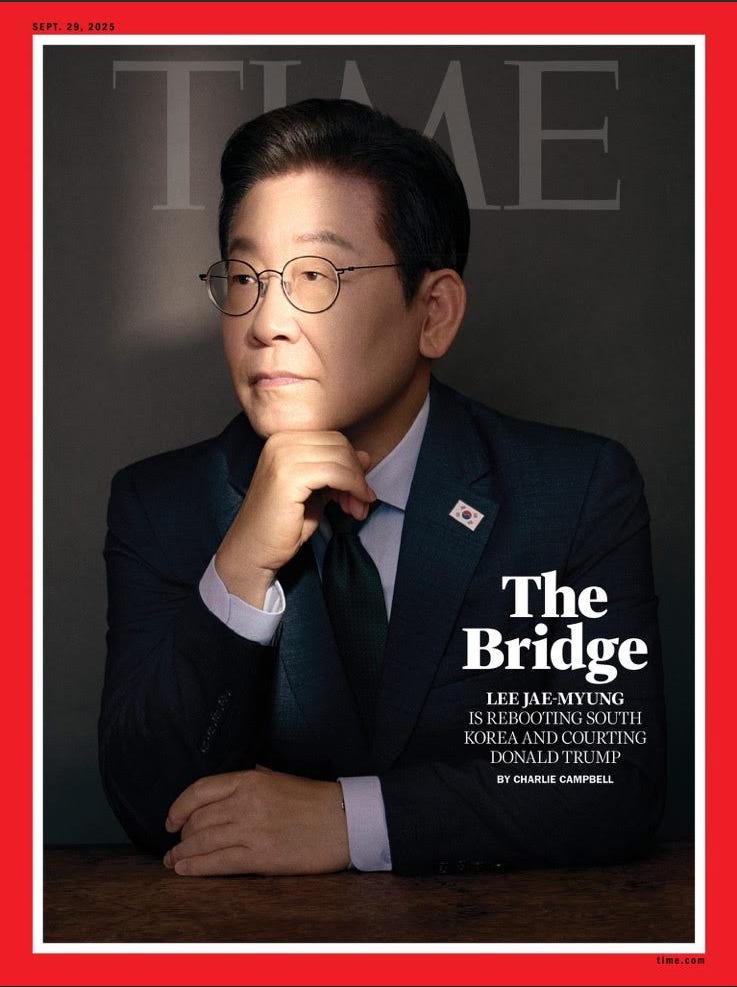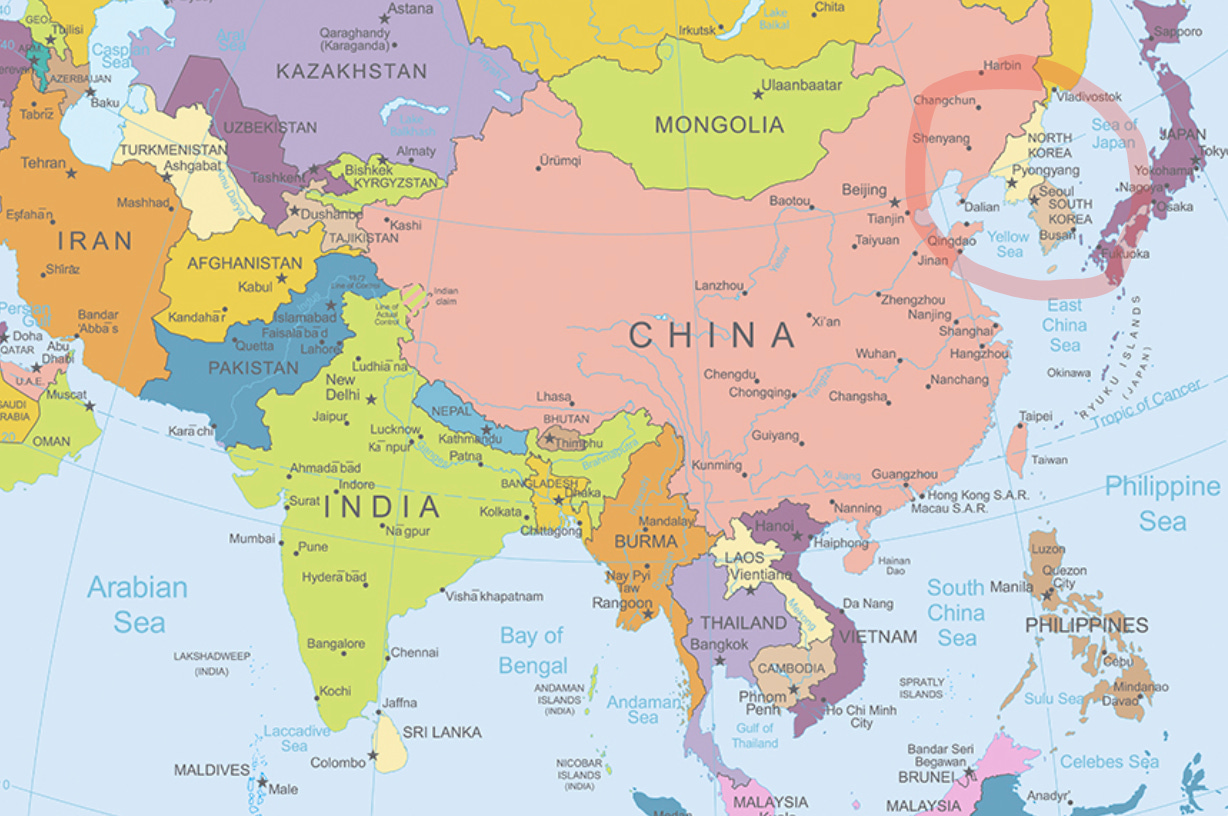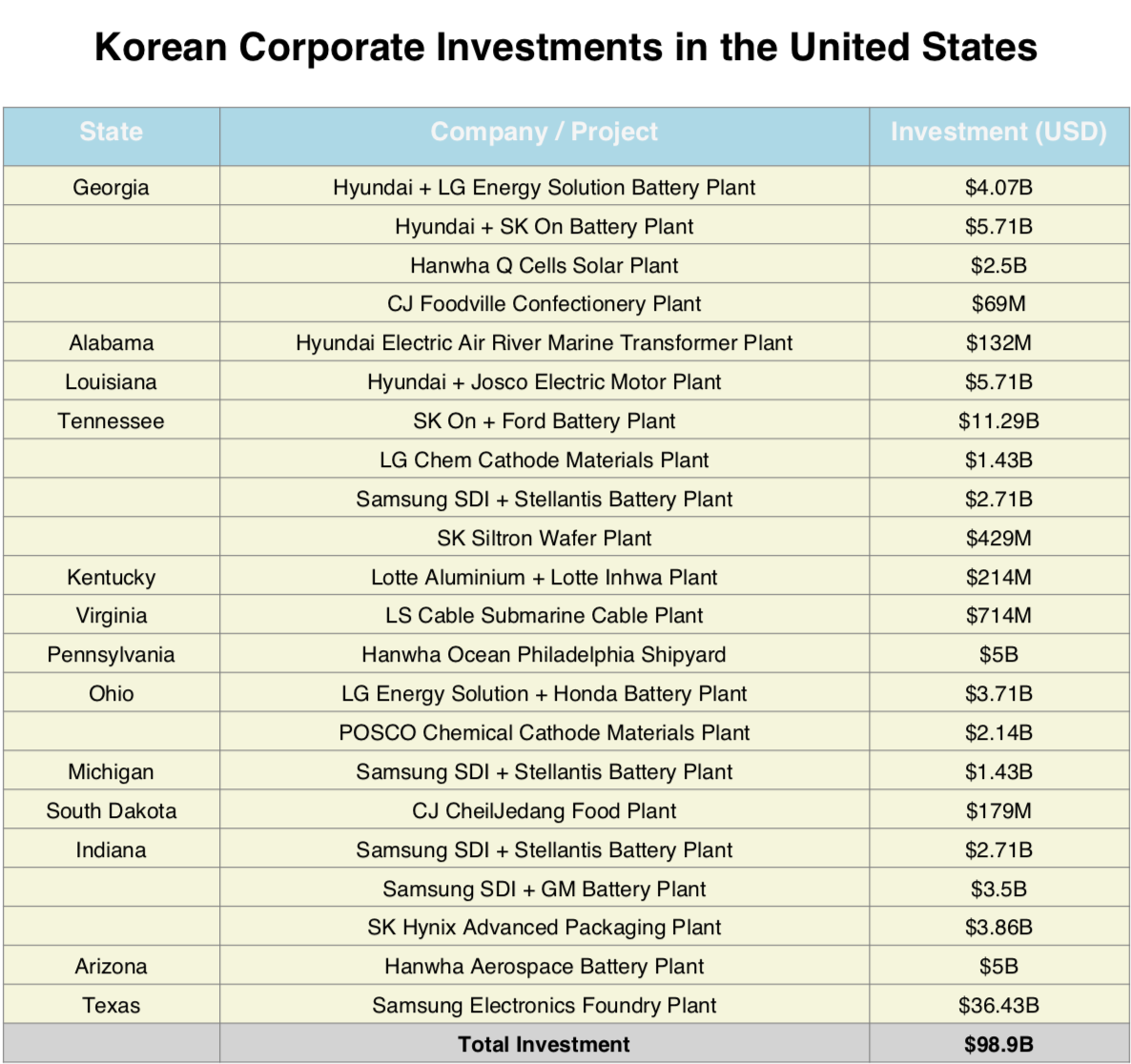A Bridge Over Troubled Waters
The South Korean government negotiated with the Trump administration over the ICE raid not only for its own citizens but for its Asian neighbors as well, including China, Japan, and Indonesia
By Simone Chun (A Guest Post for Empire Blues)
In his interview with TIME magazine this week, South Korean President Lee Jae-Myung said he envisioned himself as a “bridge of exchanges and cooperation” in the region of Northeast Asia while maintaining constructive ties with the United States.
Geopolitically, Lee wants to position South Korea as a “bridge” between East and West. Leaders of Lee’s progressive Democratic Party have traditionally been closer to China, hostile toward former colonizer Japan, and kept the U.S. at arm’s length. Lee, however, pointedly made Tokyo his first foreign visit en route to Washington and pledged to work “as partners” with Japan’s Prime Minister in the neighbors’ first joint statement in 17 years.
Lee’s actions are meant to reboot South Korea. The West may think of his nation in terms of space-age technology and zeitgeist-defining cultural phenomena like KPop Demon Hunters, though in truth South Korea battles the lowest birth rate, top suicide rate, and highest youth unemployment of any developed nation. Lee is clear-eyed about the stakes. South Korea is in “a very serious crisis,” he says. “To address these issues, we need to bring our economy back on track for growth and increase opportunities for our people.”
His pitch is that securing South Korean prosperity and boosting its role in sensitive supply chains can help regional security too. In October, South Korea hosts the Asia-Pacific Economic Cooperation for the first time in 20 years, and Lee hopes the event—due to be attended by the leaders of both the U.S. and China—can catalyze his nation’s return to Asia’s top table.
That strategy may have paid off today when US President Trump announced he would meet China’s President Xi Jinping at the APEC meeting in South Korea later this year. This would be a major political triumph for Lee’s new administration, which has presented the upcoming event as a critical opportunity for dialogue between regional powers, including North Korea. (Read more about Lee’s interview at the JoongAng Daily.)
An Alternative to Power Blocs
President Lee’s metaphor in TIME of a bridge suggests an alternative to the emerging system of two global power blocs that threatens to place South Korea on the front line of a new geopolitical battle between the United States and its allies on one hand, and China, Russia, and their friends on the other.
The clearest example of this vision is Lee’s recent effort to foster regional cooperation in response to the massive detention of Asian workers at the South Korean-owned battery plant that was raided - to President Lee’s “regret” - by the Trump administration and ICE earlier this month. The massive immigration operation at a Hyundai/LG Energy Solution battery plant in Georgia underscores how vulnerable foreign workers in general - and Asian workers in particular - are in the United States.
During that raid, ICE agents detained 317 Korean nationals, including 307 men and 10 women, in a single sweep. It was an unprecedented action by the US government’s own admission. By the time the drama ended, 316 Koreans, thanks to the South Korean government’s swift dispatch of a negotiating team, were on a Korean Airlines charter flight home. One Korean worker, a legal resident with a green card, chose to remain in the United States.
After the workers returned to Korea, many of them told harrowing stories of their treatment at the hands of ICE, sparking outrage and fear among many Koreans. According to freelancer Raphael Rashid in Seoul, one of the South Korean returnees said their ICE guards and officers mocked them with terms like as "North Korea" and "Rocket Man" despite the fact they are from the South, which as most Americans know went to war with the North in 1950 (see Rashid’s incredible thread of Twitter posts and the Yonhap film below about the Korean response to the raid).
Yet many do not know that Koreans were not the only ones caught in the dragnet.
Ten Chinese nationals, three Japanese citizens, and one Indonesian worker, along with hundreds of others - including 25 Mexican and other Latin American workers - were also rounded up and taken into custody. Luckily, thanks to the South Korean government’s quiet but determined diplomacy, all of the Asian workers were released and boarded the same government-sponsored KAL flight to Incheon International Airport on September 12.
This little-publicized development deserves attention. The Korean government coordinated not only for its own citizens but also for its Asian neighbors - Chinese, Japanese, and Indonesians.
Seoul’s outreach even prompted China’s Foreign Ministry to urge Washington to “enforce its laws fairly and protect the legitimate rights of Chinese citizens.” Japan’s foreign minister publicly thanked South Korea, noting they honor a bilateral agreement for mutual aid when citizens face trouble in a third country.
In other words, this was more than a logistical success; it was a rare moment of Northeast Asian regional solidarity. Korean officials helped Chinese and Japanese nationals, while Beijing and Tokyo acknowledged Seoul’s role. The Chinese, Japanese, and Korean governments quietly cooperated in the face of heavy-handed U.S. enforcement, with the Lee administration taking the lead in securing the release of detained Asian workers irrespective of nationality.
The gesture was small, almost invisible amid the headlines— barely reported in the news—but it mattered.
The Georgia raid shows how quickly ordinary workers—regardless of nationality— can be treated as disposable. It also foreshadows what’s to come: in this geopolitical climate of anti-China and anti-Asian sentiment manufactured by Washington, more Americans of Asian origin will be targeted.
Yet it also reveals another possibility: quiet, pragmatic cooperation among Northeast Asian nations when their citizens are at risk. It offers a glimmer of hope for a new type of trilateralism between Korea, China, and Japan. These are the three major countries in Northeast Asia that, under Washington’s new Cold War strategy, are being purposely pushed into antagonistic blocs to enable American geopolitical supremacy. Together, however, they can confront common challenges in an America-first world order that threatens their citizens.
That quiet cooperation, initiated by President Lee, deserves recognition. It points to a realistic alternative to a future dominated by a draconian U.S.-led geopolitical environment and a more self-reliant, inter–Asian community acting collectively to protect their people. In an era of escalating tension, the discreet yet decisive solidarity demonstrated by the Lee administration may be the most subversive act of all—a glimmer of hope for a truly cosmopolitan Northeast Asian spirit.
Finally, South Korea’s interest in greater independence from United States was dramatically illustrated by a rare complaint about Trump’s policies from Foreign Minister Cho Hyun to the National Assembly. Cho was the lead official sent to Washington to negotiate the release of the Asian workers at the Hyundai-LG plant.
Addressing the arrest and detainment of hundreds of Koreans in an immigration raid in Georgia, South Korea’s top diplomat said he had gotten the sense that the America of today is not what it once was. “I am coming to terms with the fact that the US of the past, which engaged in really good cooperation with allies and friendly nations, is not the US of today,” Hyun said in response to Democratic Party lawmaker Lee In-young pointing to public outrage at the fact that Korea’s longtime ally had arrested Korean workers.
This was a strong signal that the new Korean government is seeking new relationships in Asia across the board, including with the United States.
For further reading, see “Lee says Korea is at risk of becoming ‘front line’ of battle between US, China blocs” (Hankyoreh).
SIDEBAR: Why resolution of the ICE Raid is important: Korean companies have invested over $100 billion in the United States
— Simone Chun
Despite recent Korean pronouncements that the ICE raid may delay construction of the Hyundai-LG facility by two to three months, the Korean industrial giant said Thursday it will continue with its $2.7 billion expansion of the Georgia plant raided by the US government. This is from CBS News:
Hyundai Motor Group on Thursday confirmed it is going forward with previously announced plans to expand its Georgia plant, just weeks after an immigration raid delayed the startup of an electric vehicle battery plant at the site.
As part of a broader investment strategy, Hyundai said it would spend $2.7 billion to increase production capacity at the Ellabell site by 200,000 over the next three years, to a total of 500,000 vehicles a year.
The company first announced the expansion in March at the grand opening of the plant west of Savannah, and had said in August that it would invest an additional $5 billion in the United States overall. But the raid, which included arrests of more than 300 South Korean citizens, led to questions about the wisdom of the Asian nation investing in the U.S.
The company said it now plans to produce 10 models of electric and hybrid gas-electric vehicles in Georgia, up from the current two the plant has been assembling as it ramps up production. Hyundai says it's still on track to expand production worldwide to 5.6 million vehicles a year by 2030. The automaker pledged that 60% of those vehicles will be electric or hybrid powered, targeting sales in South Korea, North America and Europe.
The development underscores how much capital the Korean corporate sector are investing in the United States regardless of its immigration policies.
South Korean companies are currently investing close to $100 billion in U.S. projects, from electric vehicle plants to weapons purchases. These investments are framed as alliance-building but are equal to an amount nearly half of South Korea’s annual national budget. This amount could fund all of Korea’s national healthcare or education budgets for an entire year, or provide about $2,000 to every South Korean citizen.
To put this in perspective, $100 billion in investment could create between 250,000 and 400,000 jobs, while in terms of infrastructure, it could support the construction of 2,500 to 3,000 kilometers of modern high-speed rail or hundreds of industrial complexes, energy facilities, and technology campuses.
It could also directly generate about one million jobs in advanced manufacturing, with spillover effects creating millions more in related industries. Furthermore, in the fields of technology and industry, $100 billion could establish a complete semiconductor ecosystem and drive renewable energy projects capable of powering tens of millions of households.
Is South Korea exporting its industrial system to the United States? Only time will tell. 🌺



